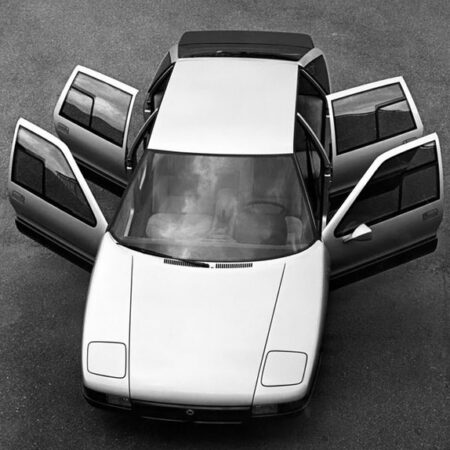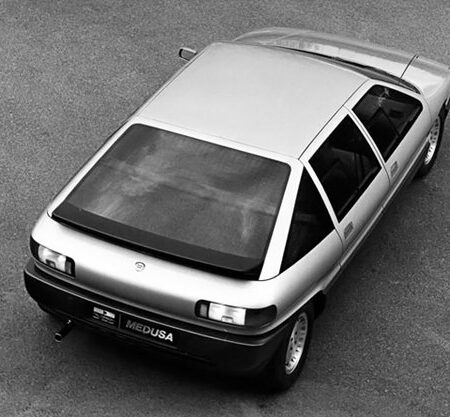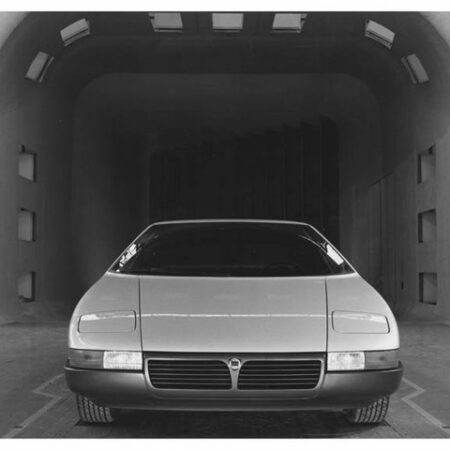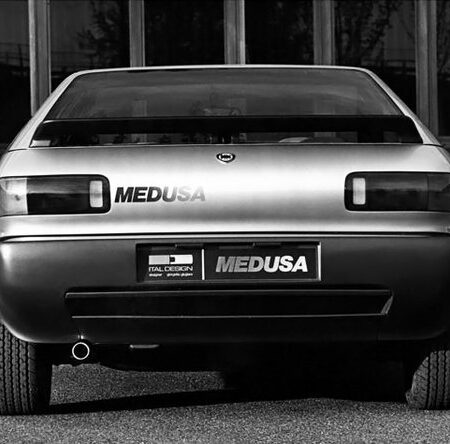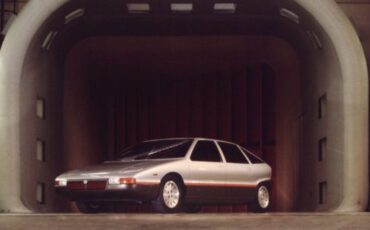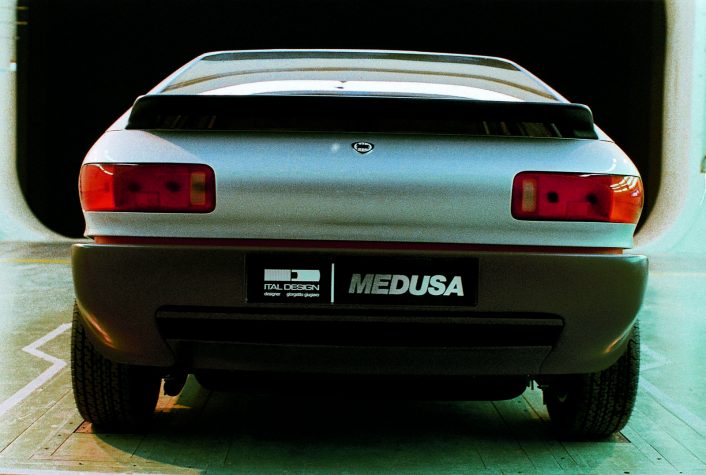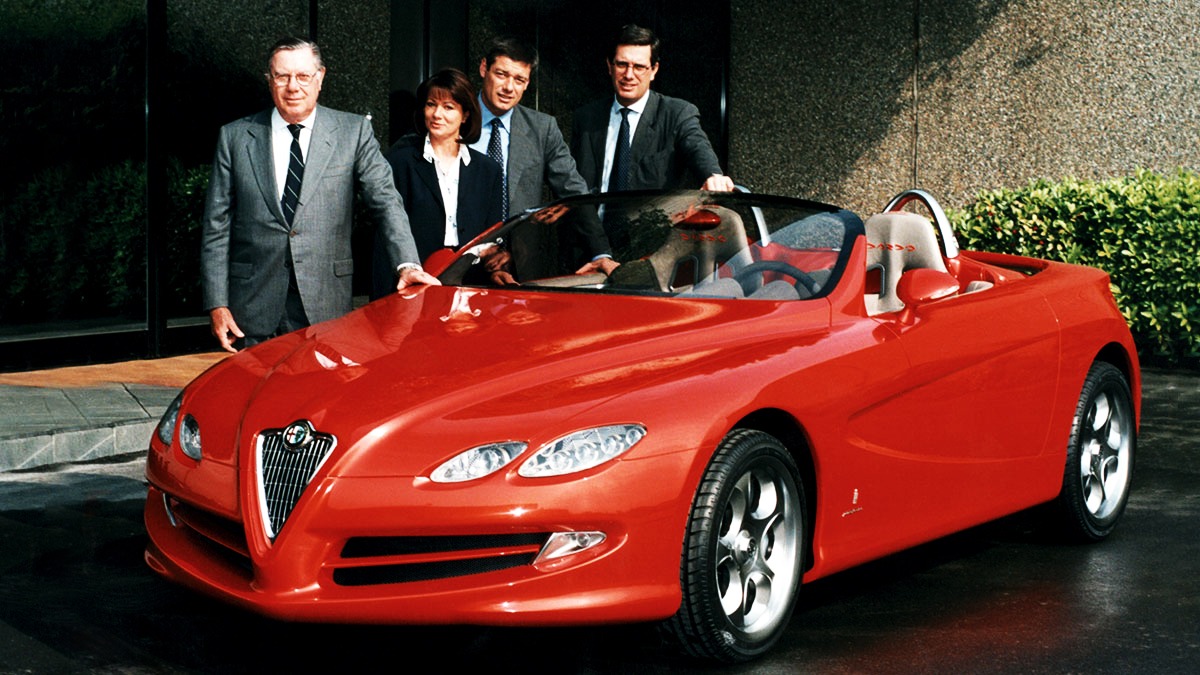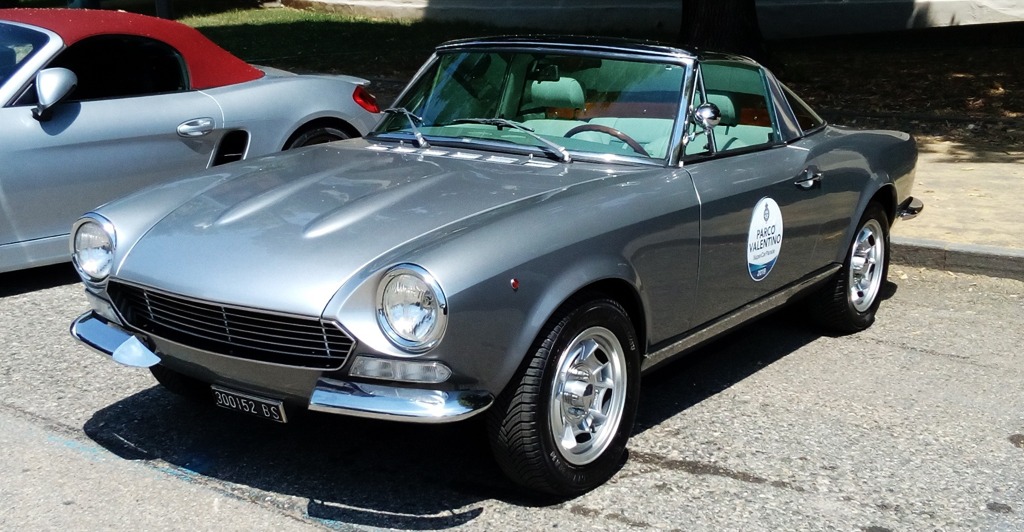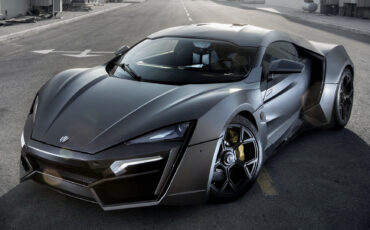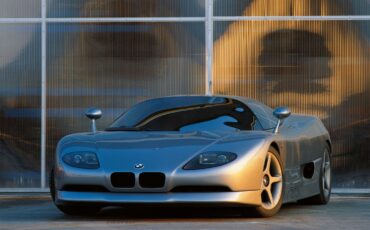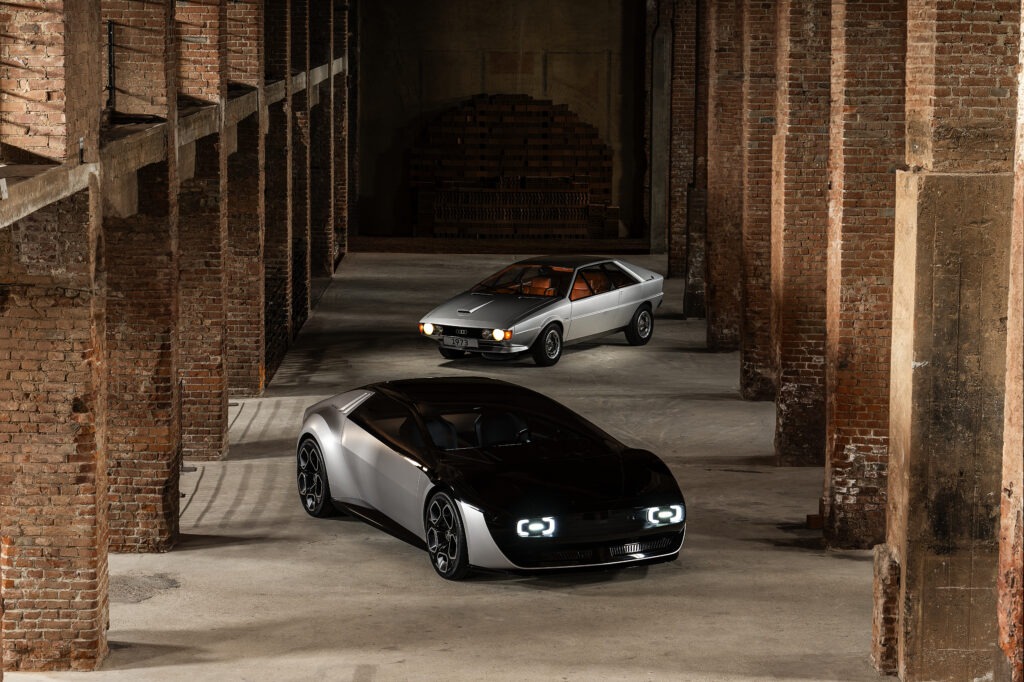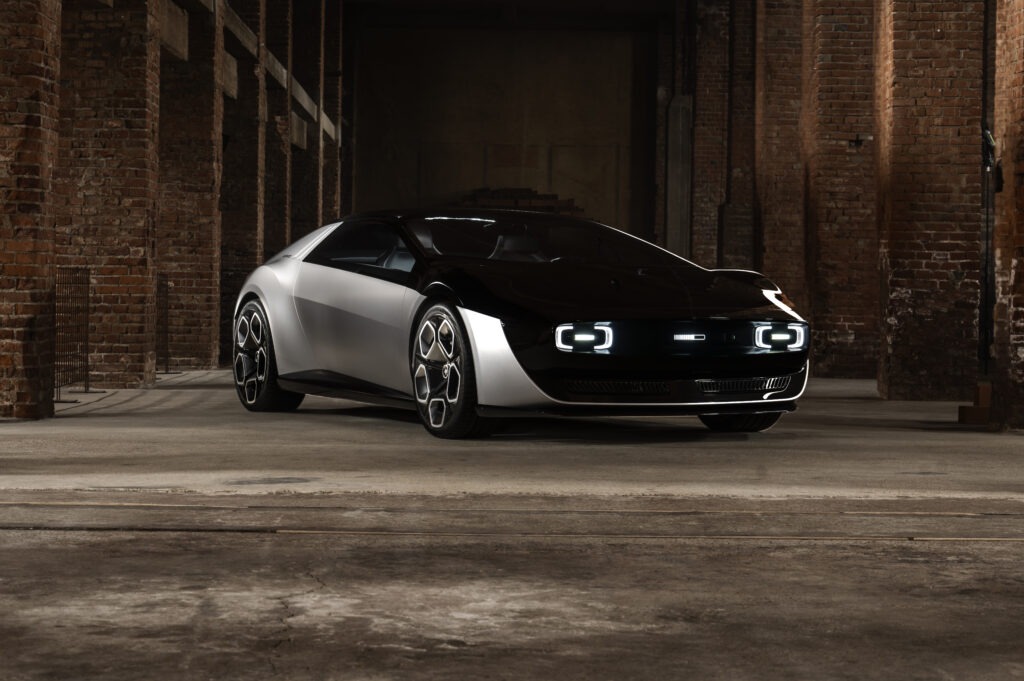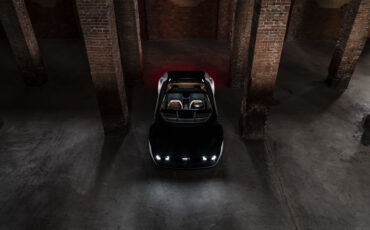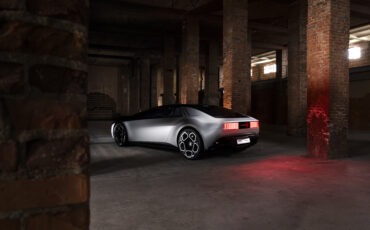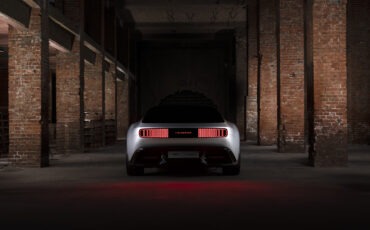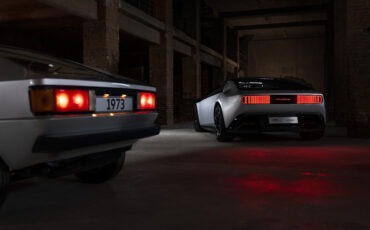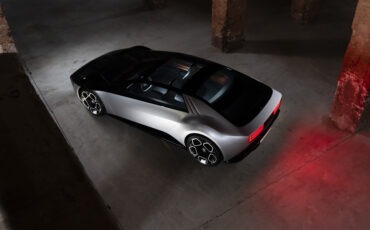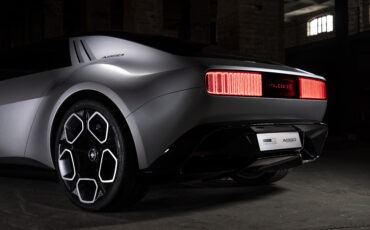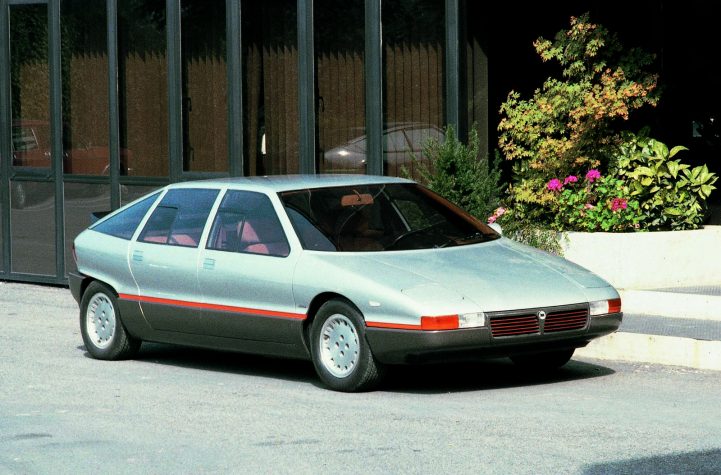
In response to the energy crisis, the automotive industry underwent a transformative shift in design principles, with a renewed emphasis on aerodynamics and weight efficiency. This paradigm shift became a focal point for Italdesign Giugiaro, particularly in the creation of the Lancia Medusa. Giugiaro recognized the importance of balancing aerodynamics with passenger comfort, ensuring that the pursuit of streamlined forms did not compromise the interior space.
The commitment to achieving the best compromise between aerodynamic performance (Cx) and interior roominess became a guiding principle for Giugiaro. The design approach involved meticulous attention to form layout and a rational consideration of weight distribution within the project. The result was the Lancia Medusa, a testament to the harmonious integration of aerodynamics and practical space utilization.
The journey toward the creation of the Medusa commenced in July 1979, with extensive research efforts directed towards optimizing its design. Aerodynamic tests, initiated in mid-October of the same year on the first full-scale chalk model, yielded a remarkable outcome: a coefficient of drag (Cx) of 0.255. Building upon this success, a working prototype was crafted based on the optimal chalk form derived from wind tunnel testing. The resulting Cx of 0.263 solidified the Medusa’s status as the most aerodynamic car in the world among mass-produced vehicles in 1980.
Giugiaro’s strategic decision to adopt rear-engine mechanics for the Medusa allowed for ample profiling of the front end, contributing to the exceptional aerodynamic performance achieved. Despite the elongation of the car’s overall length necessitated by this choice, the Medusa remained relatively compact at 4 meters and 40 centimeters. This blend of innovative design, aerodynamic excellence, and practical spatial considerations positioned the Lancia Medusa as a pioneering vehicle in the evolving landscape of automotive design during a critical era of change.
Aerodynamic
The pursuit of optimal aerodynamics in the design of the Lancia Medusa gave birth to a distinctive, rounded, and clean-cut exterior form, free from protrusions and rough edges that typically induce noise and turbulence. The structural elements of the bodywork, including the door frames, pillars, and window areas, were seamlessly integrated without unnecessary additions, contributing to the car’s aerodynamic efficiency.
The Medusa boasts a sleek profile with three side windows, enhancing visibility and allowing for an abundance of natural light within the cabin. Notably, the front door frame aligns seamlessly with the windscreen pillar, creating a unified and aerodynamic transition, while the rear hatch terminates at the same level as the second door. The elimination of drip channels on the roof further contributes to the smooth, uninterrupted lines of the vehicle.
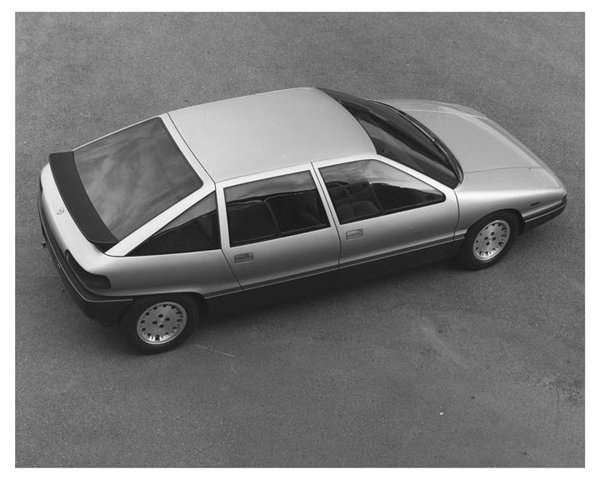
In a nod to aerodynamic principles, the side-view mirrors have been strategically repositioned to minimize drag, and the door handles are designed to be flat and flush with the surface. Even the side windows, fixed and seamlessly integrated with the outer framework, operate using electrically-operated sliding panes. The innovative sliding mechanism enables the moving part to slide forward and retract internally, enhancing the car’s overall aerodynamic efficiency.
The commitment to aerodynamics is further demonstrated by the flat and streamlined design of the wheels. Apart from the necessary openings for cooling, the wheels are free from rough edges, contributing to the cohesive and aerodynamically optimized aesthetics of the Lancia Medusa. Additionally, the use of lighter yet stronger materials in the construction of the doors not only enhances the car’s structural integrity but also increases the available room within the passenger compartment by eliminating bulky window raising mechanisms. This attention to detail showcases Giugiaro’s dedication to achieving the perfect balance between aerodynamics, functionality, and aesthetics in the Lancia Medusa.
The Design
The distinctive style of the Lancia Medusa is characterized by the sectional movement along its sides, a design feature carefully crafted by Giugiaro to achieve optimal aerodynamic efficiency. The positioning of the sill areas towards the outside serves the dual purpose of aerodynamic wheel protection and lightening the side view. Giugiaro’s design choice involved a deliberate recessing of the sections to not only reduce the main profile but also to create a visually dynamic motif that seamlessly flows from the front end and continues uninterrupted along the entire circumference of the car. While the constancy of this design element might appear excessive, it was a result of wind tunnel testing, where it proved to create no wake distortions.
A visual contrast is introduced through the use of a darker color paint that unifies the front and rear underbody bumpers and the sill area band. Adding a layer of sophistication, an orange strip serves to highlight the separation between this area and the sheet metal background.
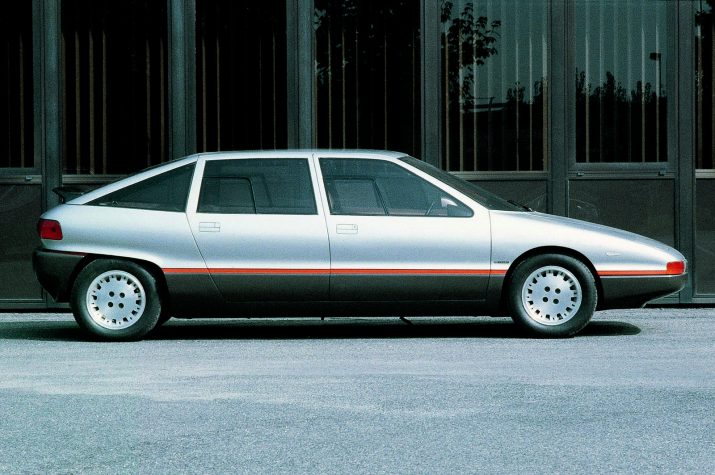
At the front end, the Medusa features a reinforced resin unit that serves the dual function of a bumper and a grille, showcasing Giugiaro’s commitment to both aesthetics and functionality. The luggage compartment, with a capacity of 230 dm3, is strategically designed to accommodate two cases, recognizing the sports-oriented nature of the vehicle. Giugiaro’s focus on passenger space is evident, with a thoughtful approach that prioritizes comfort without compromising on the practical aspects of storage.
The retractable headlights and the faired wiper attachment contribute to the overall streamlined design of the Medusa’s front end, minimizing rough edges and enhancing aerodynamic efficiency. Additionally, a spoiler applied to the base of the rear window serves a dual purpose—maintaining the outstanding drag coefficient and psychologically “lightening” the rear end, addressing the potential claustrophobic feeling often associated with rear-engined cars. Giugiaro’s holistic design approach seeks to enhance both the visual appeal and livable space of the Lancia Medusa, setting it apart as a unique and thoughtful sports car.
The interior
In the pursuit of optimizing the Lancia Medusa’s interior space and enhancing the driver’s experience, Giugiaro implemented innovative design elements. The window area, uninterrupted by structural elements, and the streamlined dashboard contribute significantly to creating a spacious and ergonomic passenger compartment. With a height of 1120 millimeters, the cabin offers ample headroom, while the generous 1800 mm distance between the pedals and the rear seat back aligns with the standards of longer sedans, prioritizing comfort for occupants.
Giugiaro’s commitment to a new driver-centric approach is evident in the concentrated placement of buttons and levers onto a single unit at the center of the steering wheel. This unit dynamically adjusts its position as the driver customizes the steering wheel, ensuring convenient and intuitive control access. The incorporation of ultrasound technology enables the transmission of commands without the need for complex cabling between the steering column and dashboard, a thoughtful solution arising from ergonomic studies. This design allows drivers to operate all controls without removing their hands from the wheel, enhancing both comfort and safety during driving.
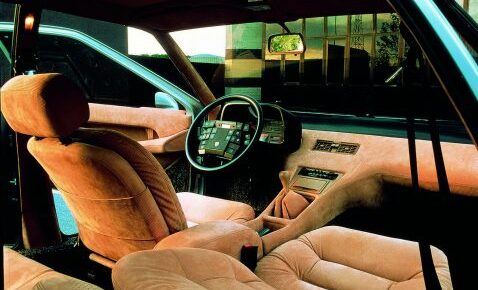
The traditional dashboard serves as a LED display for essential information, including the speedometer, rev counter, warning lights, and level gauges. A remote control device further enhances convenience, allowing users to turn off lights left accidentally on or activate parking lights from a distance. In contrast to the simplified dashboard, the Medusa introduces a sizable console/tunnel. Alongside the armrest on the door, this feature surrounds the passenger akin to a comfortable armchair, drawing inspiration from Giugiaro’s earlier concept introduced in the Lotus Esprit in 1972.
The absence of window drop mechanisms in the door panels contributes to increased shoulder and arm freedom of movement. The driver’s door incorporates electric controls for the four sliding panes and the side-view mirror, while the other doors feature the sliding pane opener button. Upholstered in treated chamois leather, the seat cushions are meticulously hooked to the seat structure, reflecting Giugiaro’s attention to both aesthetics and functionality.
READ ALSO
Adding to the overall passenger experience, the stereo system boasts two speakers per passenger, strategically located inside the headrests at the front and within the seat backs at the rear. This meticulous attention to detail in both design and functionality underscores Giugiaro’s commitment to creating a sophisticated, comfortable, and technologically advanced driving environment within the Lancia Medusa.
Adding to the overall passenger experience, the stereo system boasts two speakers per passenger, strategically located inside the headrests at the front and within the seat backs at the rear. This meticulous attention to detail in both design and functionality underscores Giugiaro’s commitment to creating a sophisticated, comfortable, and technologically advanced driving environment within the Lancia Medusa.
Conclusions
The Lancia Medusa showcases Italdesign Giugiaro’s mastery in blending aerodynamics, passenger comfort, and technological innovation. Its sleek exterior, commodious interior, and driver-centric controls redefine automotive design standards. Giugiaro’s meticulous attention to detail and forward-thinking approach have birthed a timeless masterpiece, setting new benchmarks in both form and function. Additionally, Italdesign produced derivatives for other iconic brands, such as the DMC-24 4-door 4-seater sedan for the DeLorean Motor Company, and the Lamborghini Marco Polo concept car. The Medusa serves as a symbol of innovation and excellence in the ever-evolving realm of automotive engineering.

